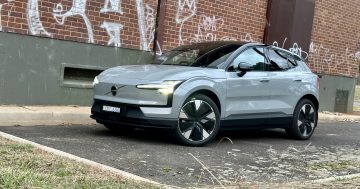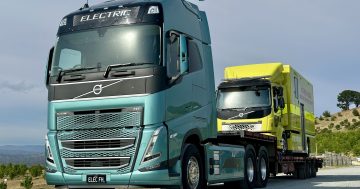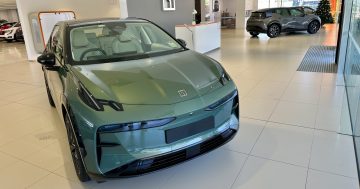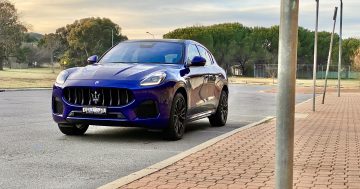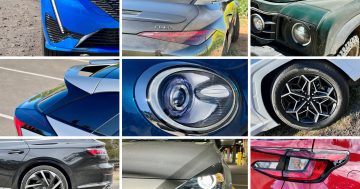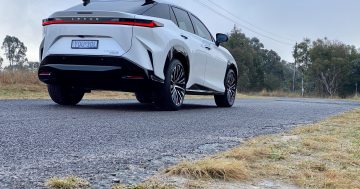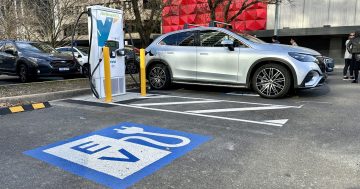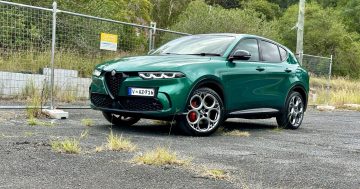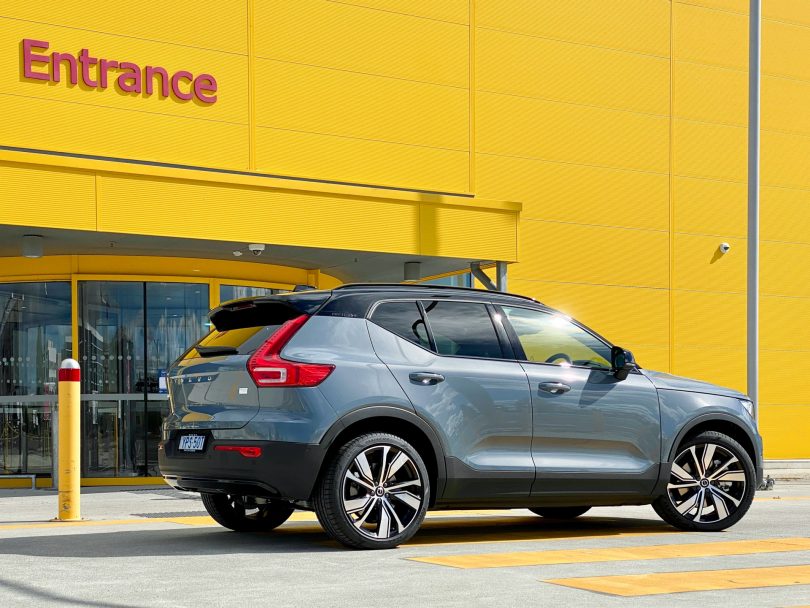
Thanks to IKEA Canberra who closed the store so we could get these shots (probably). Photo: James Coleman.
Ask any car boffin and they’ll tell you: the single biggest issue with the design of the ever-rampant sports utility vehicle (SUV) is the high centre of gravity.
This affects the handling such that should you put the average one near an exuberant corner, you’ll be greeted by a degree of wallowing not seen since Malcolm Turnbull lost the prime ministership.
Well, it turns out a slab of batteries solves this problem.
Take out the engine, the gearbox, and the other oily, hefty bits and place an electric motor over the front axle, another over the back, and a battery pack in between, and the SUV becomes a go-kart.
All of the weight is now level with the wheels so that if a spirit level were to be put on the roof of the car mid-bend, the bubble would hardly quiver.
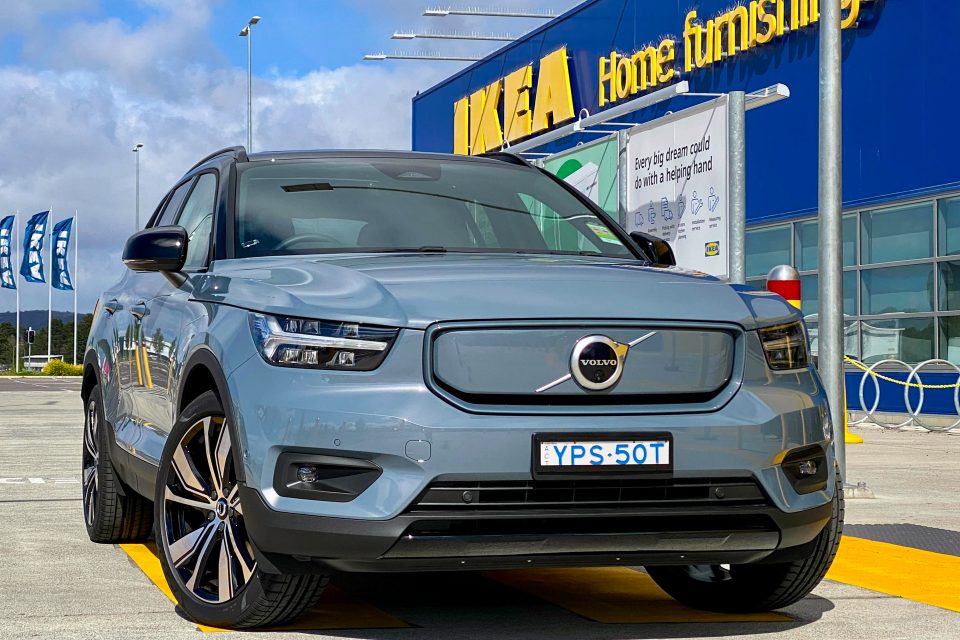



Not only that, but put your foot down and there are no second thoughts, no scrambling for the right gear, no barking orders at fuel injectors. There’s just a faint whirring noise while you’re smoothly wallopped towards the horizon.
Make what you will of electric vehicles, but there were more smiles to be had in the new Volvo XC40 Recharge Pure Electric than any other SUV I’ve ever driven.
Volvo has given up entirely on the internal combustion engine, saying that by 2030, all of their cars will be powered solely by electricity.
So forget the dull Volvo boxes of yesteryear that were only ever driven by people in felt hats with such wide brims they clearly couldn’t see where they were going half the time. Today’s Volvo driver is on the cutting edge. And going jolly fast, too.
The electric XC40 takes the existing funky design of the standard XC40 and covers up the front grille with a piece of body-coloured plastic. To all other appearances, it’s a normal car.
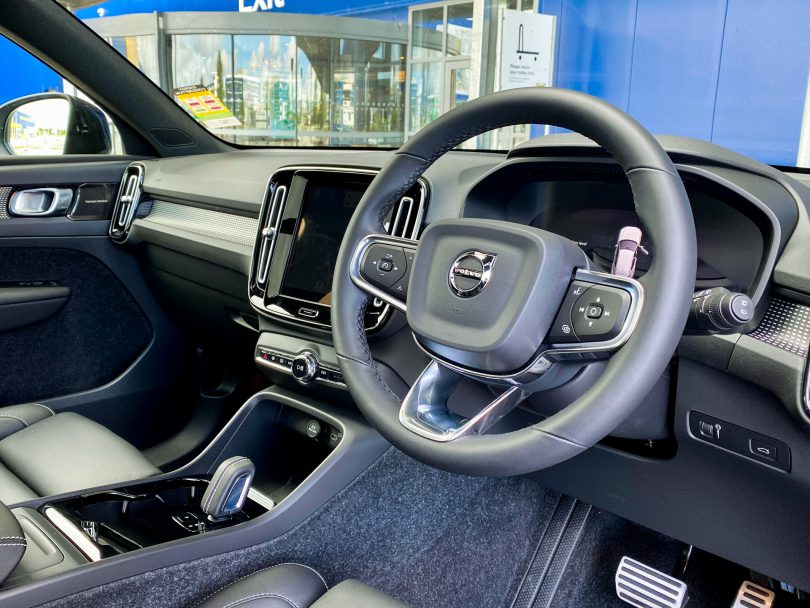
The carpets are made from recycled plastic in a bid for sustainability. Photo: James Coleman.
For now, however, the technology comes at a premium. Driveaway pricing starts at $76,990, which is about $20K more than the 2.0-litre turbocharged petrol T5 R-Design model. On the other hand, it’s on par with the cheapest Tesla.
You also get half a tonne more car than the standard XC40 and 31 litres of extra storage space under the bonnet. Not to mention a charging cable in the boot, which I discovered at one of the public charging stations in the IKEA car park, is only good for a domestic power socket.
Volvo has built up a bit of a reputation for having the finest cabins this side of Rolls-Royce and this one … well, it’s okay. All the carpets are made from recycled plastic, and you get the feeling that everything else is very kind to endangered species, but that doesn’t stop some of the hard surfaces from feeling a little scratchy.
The best thing about it is the Google-based infotainment system. Take note, car manufacturers, you might be able to build a car, but that doesn’t mean you can design your own digital interface. Save yourself and us the hassle and ask someone who can.




Everything else is even more simple. As long as the key is inside and you’re sitting in the driver’s seat, the car is on. That’s it. You’ll find more buttons on a velcro suit.
Pop it into ‘D’ and press the accelerator for go. But when it comes time to stop, rather than using the brake to vaporise all that hard-earned electricity into heat, simply lift your right foot.
There’ll be some slightly panicked drivers behind you while you get the hang of it, but the so-called ‘regenerative braking’ becomes surprisingly natural after not too long.
This brings us to the all-important range. Volvo promises up to 418 km, but the car displays it as a battery percentage – much like a smartphone – which somehow seems more comforting.
A fast charger will bring it back from empty to 80 per cent in 40 minutes while the socket in your garage at home will take closer to eight hours.
Much like any other car, if you drive hard you’ll be filling up more often. The trouble with this electric SUV is that you’ll also be filling up for longer, which means even less time driving. Pity.
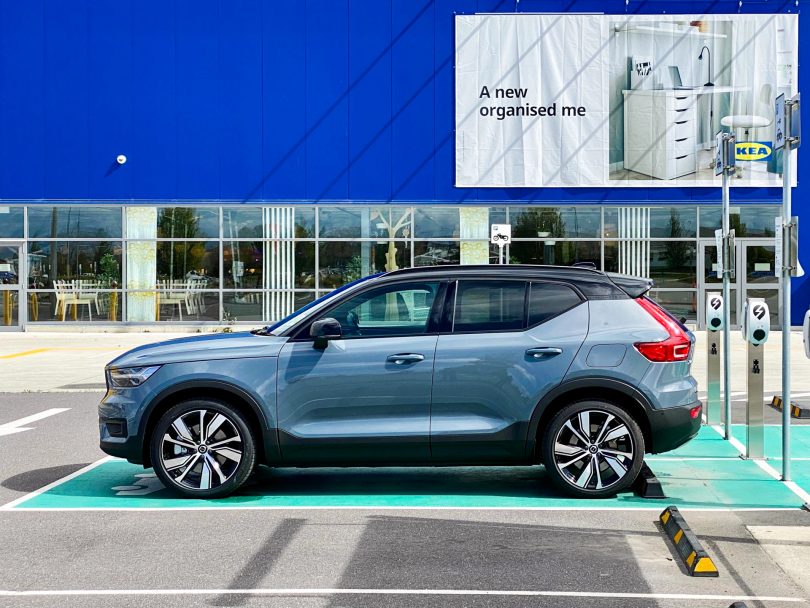
It turns out I had the wrong cable attachment to plug it in. Photo: James Coleman.
2021 Volvo XC40 Recharge Pure Electric
- $76,990 (plus driveaway costs)
- 2x electric motors and 78 kWh lithium-ion battery, 300 kW / 660 Nm
- All-wheel drive
- 0-100 km/h in 4.9 seconds, 180 km/h top speed
- 418 km range
- 5-star ANCAP safety rating.
Find out more at Volvo Cars Canberra.












